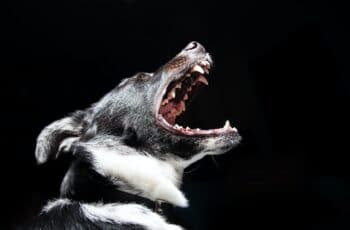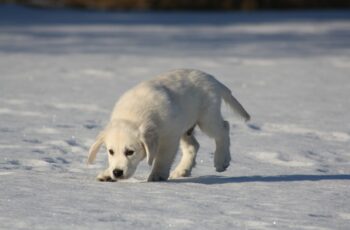Most dogs like chewing, and it is a natural behavior that fulfills the dog’s desire to work his jaws. It helps keep his teeth clean and helps him feel full. Some dogs will chew just about anything, including shoes, furniture, or even your houseplants. Chewing is not considered destructive behavior, as it helps to keep your dog’s teeth clean. It has been suggested that we should limit a dog’s chewing to two hours a day. This is determined by the type of chew and the amount of time your dog spends chewing on it.
The chewing behavior in dogs is normal, but sometimes our pet dogs direct their chewing behavior toward inappropriate items. Both puppies and adult dogs should have a variety of appropriate and attractive chew toys. However, just providing the right things to chew isn’t enough to prevent inappropriate chewing. Dogs need to learn what is okay to chew and what is not. They need to be taught in a gentle, humane manner.
Here are ten ways you can manage or reduce your dog’s destructive chewing.
10 Ways to Manage Your Dog’s Destructive Chewing
1. Create a chew toy basket that holds their favorite playthings and includes softer items like old socks, new shoes, and old clothes that they can sink their teeth into.
2. Keep them away from dangerous things like batteries, razor blades, and screwdrivers.
3. Take away all chew toys immediately after playing with them.
4. If they try to chew on something dangerous, remove it immediately and replace it with something they can’t break off.
5. Make sure your puppy has plenty of time to burn off energy while indoors during the day so that he’s not barking at every noise outside in hopes of running out the door or chewing anything that comes his way.
6. Introduce your dog to various toys so that he doesn’t get bored with just one.
7. If you catch him in the act, say “no” firmly and take him away from whatever he’s chewing.
8. If he chews on something that they shouldn’t, have his favorite treat nearby so that he goes to it instead of the item in question.
9. If all else fails, replace the item with a new toy that is more interesting and will get their attention.
10. If you don’t want your pet to chew on your possessions, “dog-proof” your house. Make sure that your dogs cannot get at any items you do not want them to have. This might mean taking all the trash out of your can, putting all clothing and shoes away, and checking cabinets and drawers before leaving the house.
Also, you can spray chewing deterrents. Spray deterrents are chemicals that leave a bad taste in your dog’s mouth when they chew on certain items. These items include leather couches, chairs, shoes, wood furniture, and even electrical cords. It is crucial to choose the right product for the right item.
In Summary
Developing an effective strategy to deal with a dog who chews may take some time and planning. It requires time and patience. But the time and effort will be worth it in the end.


